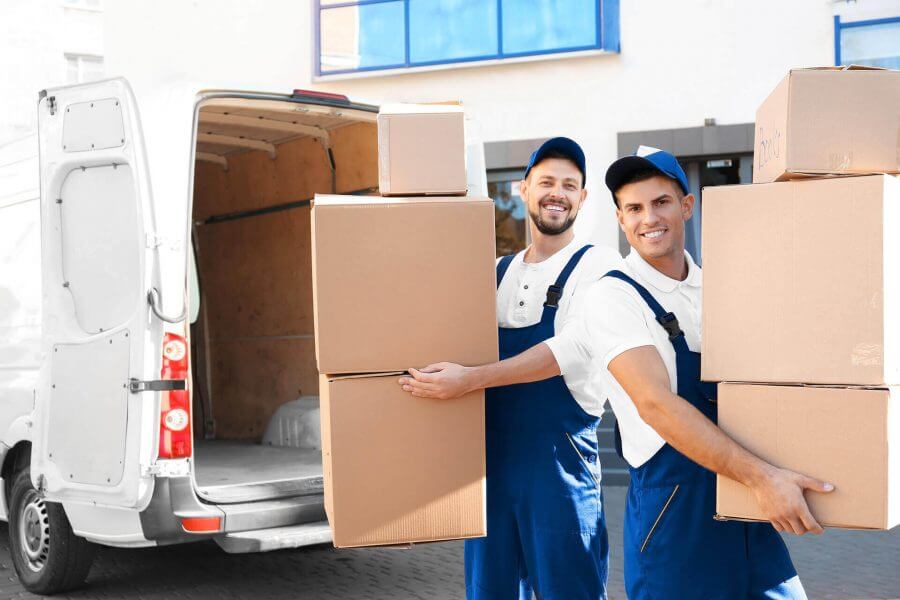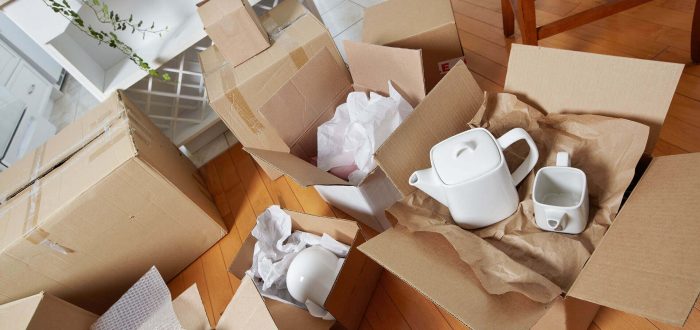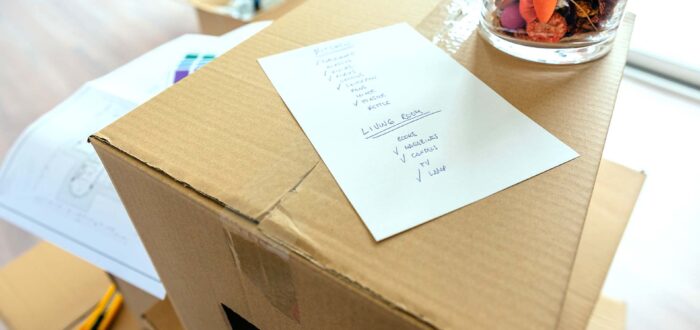

Proven Strategies to Prevent Things From Breaking During a Move
Posted in Moving Tips & Tricks,Planning the Move on March 22, 2024
Moving cross-country can be a stressful process, filled with concerns about safely transporting your belongings. To prevent things from breaking, it’s crucial to implement proven strategies and protective packing techniques that safeguard your items throughout the move. This post offers essential advice and tips to ensure your possessions arrive at your new home in perfect condition. Discover how to minimize risks and make your move a seamless experience.
What Makes Items Vulnerable During Shipping?
Various things become vulnerable during shipping primarily due to the physical stresses they encounter. Vibrations, impacts, and pressures, often unavoidable in transit, can weaken or damage your belongings if not adequately protected. Packed glasses, sensitive electronics, and valuable wrapped antiques are particularly at risk. The lack of proper packaging materials and techniques exacerbates these risks, making certain belongings more susceptible to damage.
Moving Breakables Safely Starts With Identifying Fragile Items
The key to moving safely is first identifying which things are fragile and require special attention while packaging. Creating a relocation inventory of these items is a wise idea – this not only helps in organizing the packing process but also ensures that each item receives the appropriate level of protection. This step is crucial in minimizing the risk of breakage during shipping.
Factors Contributing to Breakage During Transport
Several factors contribute to the breakage during transport to a new state. Poor packing is a primary culprit – it’s one of the most common relocation mistakes. The problem occurs when things are not secured properly or are packed without sufficient cushioning material. Inadequate cushioning fails to absorb the shocks and vibrations of transit, leaving your belongings vulnerable to damage.
Rough handling, whether during loading, unloading, or transport, can also lead to breakages, particularly if boxes are not labeled as fragile. Understanding these factors is essential for preventing damage and ensuring a smooth relocation process.

The Essentials of Protective Packaging
When it comes to preventing damage during shipping, the right protective packaging is non-negotiable. Ensuring your belongings are well-cushioned, secure, and immobile can drastically reduce the risk of breakage. High-quality packing materials play a pivotal role in absorbing shocks and minimizing movement within boxes, safeguarding your valuables throughout the journey.
Choosing the Right Packing Materials
The process of efficient packing starts with selecting the appropriate materials. These materials are crucial for creating a protective environment for your belongings, ensuring they remain safe and intact. Here’s what you need to have at hand when packaging breakables:
- Bubble wrap – Ideal for wrapping around fragile items, offering a protective air cushion that absorbs impacts.
- Packaging paper – Works best when combined with bubble wrap.
- Packing peanuts – Fill voids in boxes, preventing items from shifting and providing cushioning from all angles.
- Foam pads – Perfect for lining the bottoms and sides of boxes or placing them between stacked items, offering an additional layer of shock absorption.
- Sturdy boxes – An essential part of any relocation. Choose high-quality moving boxes that can hold up under weight and pressure without collapsing.
Packing Fragile Items for Moving – Layered Packing Technique
Layered wrapping is an effective packaging strategy for securing fragile items. This technique involves wrapping each item individually in bubble wrap or similar protective material, then placing them in a box with layers of cushioning (like packing peanuts or foam pads) in between.
The goal is to prevent movement and contact, creating a snug, safe nest for each item. By employing this method, you significantly reduce the risk of damage, ensuring that your fragile belongings reach their destination in perfect condition.

How to Prevent Things From Breaking? Special Packing Tips for Fragile Items
Preventing damage during a move and ensuring the safety of fragile items requires special attention and packaging techniques. Below are tailored packing tips for various delicate items, emphasizing the importance of individual wrapping and secure placement within boxes to mitigate the risks associated with transport. These include using cell dividers for glassware, original packaging for electronics, and mirror boxes for mirrors and artworks.
Glassware and Ceramics
For glassware and ceramics, the use of cell dividers in boxes is highly recommended. These dividers keep items separate, minimizing contact and the risk of breakage. Wrap each piece individually in bubble wrap or packing paper, ensuring all surfaces are covered. This extra layer of protection absorbs shocks and vibrations during transport, significantly reducing the likelihood of damage.
Electronics and Appliances
When packing electronics and appliances, utilizing their original packaging when available is ideal, as these boxes are specifically designed to protect these objects. If the original packaging is not available, wrap your electronics in anti-static bubble wrap to prevent electrical damage. Seal any liquids in leak-proof containers and remove or secure movable parts to prevent internal damage.
Artwork and Mirrors
Artwork and mirrors require special care due to their fragility and often irregular shapes. Use mirror boxes that match the size of your items to provide sturdy, form-fitting protection. Mark these boxes as “Fragile” to ensure careful handling.
Padding the corners with foam protectors can prevent chips and cracks. For added security, wrap the entire item in bubble wrap or a protective blanket, securing it with tape. These strategies help safeguard your most delicate objects against the rigors of moving, ensuring they arrive in the same condition as they left.
Techniques for Secure Loading and Unloading
An efficient relocation requires more than just careful packing – the techniques used during loading and unloading are equally crucial to prevent damage. Understanding and implementing strategic loading and gentle handling practices can significantly reduce the risk of accidents and ensure that your belongings arrive safely at their new home.
Strategic Loading of the Moving Truck
If you’re loading the moving truck on your own, the placement of items is key to minimizing movement during transport. Begin by placing the heaviest boxes on the bottom. This creates a stable base and prevents lighter items from being crushed. Ensure that all objects are stacked closely and securely, using straps or ropes if necessary to prevent shifts and falls. Fragile belongings should be placed on top or in specially marked areas where they are less likely to be affected by pressure or movement.
Gentle Handling and Unloading Practices Your Long-Distance Movers Should Implement
Gentle handling is essential, particularly during the loading and unloading phases. Using tools like hand trucks and dollies can facilitate the safe movement of heavy items, reducing the risk of dropping or mishandling.
Professional movers are trained in the best practices for handling delicate items, which should always be employed for particularly valuable or fragile belongings. Emphasize the need for careful unloading, ensuring that each item is placed gently on the ground and immediately moved to its designated spot to avoid any unnecessary handling or movement. These practices are fundamental in safeguarding your belongings.

Ensuring a Smooth Ride – Choosing the Right Transportation
Selecting the right mode of transportation is crucial for ensuring the safety of your belongings during shipping. The decision should be influenced by the distance of your move and the specific items you’re transporting. For long-distance moves, consider options that offer a balance between speed and the safety of your belongings. Trucks with air-ride suspension provide a smoother ride, reducing the risk of damage caused by vibrations and bumps on the road.
For delicate items, such as electronics or fine art, temperature-controlled transportation may be necessary. Extreme temperatures can cause irreparable damage, so vehicles equipped with climate control systems are great for maintaining a stable environment throughout the journey.
Additionally, the size and weight of your boxes should dictate the type of vehicle used. A larger truck might be needed for a substantial household move, while a smaller van could be more suitable for transporting a few high-value things.
The Role of Professional Movers When Moving Across the Country
Moving across the country presents a unique set of challenges, from the logistical complexities of long-distance transportation to the heightened risk of damage to your belongings. In this context, professional movers play a crucial role in ensuring a seamless transition. Their expertise not only simplifies the moving process but also provides peace of mind, knowing your belongings are in capable hands.
When to Hire a Long-Distance Moving Company for Fragile Items
The decision to hire professional movers becomes particularly critical when dealing with breakables. High-value, bulky, or exceptionally delicate belongings, such as pianos, antique furniture, or fine art, require specialized handling and packing techniques to prevent breakage.
In scenarios where the risk of damage is high – due to the item’s value, size, or sentimental worth – entrusting these to professionals can significantly reduce the likelihood of damage. Professional moving companies are equipped with the necessary tools, materials, and expertise to ensure these items are transported safely across long distances.
What to Look for in Cross-Country Moving Services?
Choosing the right cross-country moving service is pivotal. Start by verifying the company’s licensed and insured to protect yourself against potential relocation scams. You can do this by checking the company on the FMCSA website. Ensure the movers have specific experience and a positive track record with handling fragile belongings. This can often be discerned through customer reviews and testimonials.
Look for companies that offer detailed moving plans to address the unique needs of your relocation, including itemized inventories and customized packing assistance. A reputable service should also provide transparent pricing and clear communication throughout the moving process. These factors combined will help you select a moving company that aligns with your needs – a company like Cross Country Movers.

Reach Out to Our Expert Team at Cross Country Movers – We’re Here to Help Make Your Upcoming Move a Success
Planning a cross-country relocation can be overwhelming, but you don’t have to navigate it alone. Our expert team at Cross Country Movers is dedicated to providing you with the support, resources, and services you need to ensure your relocation is a success. From handling fragile items with care to managing the logistics of a long-distance move, we’re equipped to address all your moving challenges.
With our experience and commitment to customer satisfaction, we strive to make your moving process as smooth and stress-free as possible. Contact us today and discover how we can assist in making your upcoming move seamless. Your journey to a new beginning starts with Cross Country Movers!
FAQ
What's the Best Way to Seal Boxes Containing Fragile Items?
Use quality packing tape to reinforce the box’s bottom and top. Apply tape in an ‘H’ pattern for added durability. This method ensures the contents are securely enclosed and protected during transit.
What Should I Do If an Item Breaks During the Move?
Immediately take detailed photos of the damage for documentation. Keep all pieces of the broken item together. Contact your moving company or insurance provider as soon as possible to start the claims process.
How Do I Unpack Fragile Items Safely After a Move?
Carefully open boxes to avoid jostling the contents. Remove each item one at a time, placing it on a cushioned surface for inspection. Proceed slowly to identify and handle any damages immediately.




